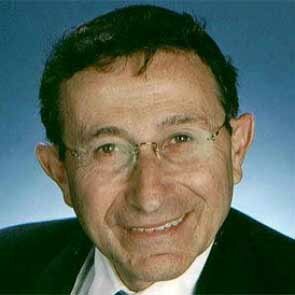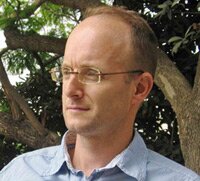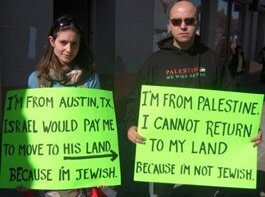Haaretz: Skeletons, High Court rulings, bigwigs embroiled in other scandals, a world-famous architect and some Hollywood panache − all are part of the story of the Museum of Tolerance, slated for one of the most sensitive parts of Jerusalem: on top of a Muslim cemetery. For the first time, Haaretz reveals evidence of a highly dubious, five-month rescue excavation that took place secretly on the site, plus other previously unknown details. A three-part saga.
IOA Editor: This important Haaretz investigative report consists of six articles covering different aspects of the development of the Jewish “Museum of Tolerance” to be constructed atop the historic Muslim Mamilla Cemetery. The Haaretz Hebrew website series is entitled (as of 18 May 2010) “Museum of Intolerance” and the English website series is entitled “Museum of Tolerance Special Report.” The latter version is included on the pages of the IOA.
Why is this report important? The Mamilla Cemetery is a Muslim cemetery with thousands of grave sites that go back some 1200 years. Grave sites are sacred to both Islam and Judaism. This case demonstrates vividly how important it is for Israel to eradicate every possible trace of Palestinian life from the history of Palestine – chapters of history that document non-Jewish life – and doing so even at the risk of embarrassment and international criticism. And while the erasure of the history of the Palestinian dead is important, it actually compliments a far greater injustice: the razing of some 500 Palestinian villages by Israel during the 1948 Nakba and the Occupation.
As is often the case, Haaretz’ two language versions need not be the same and, as indicated by the different series headers, the English version may be toned-down or lack important details, sometimes those that are more critical of Israel than the Haaretz editors wish to publish outside of Israel.
By Nir Hasson, Haaretz – 18 May 2010
www.haaretz.com/magazine/museum-of-tolerance-special-report/museum-of-tolerance-special-report-in-response-to-the-revelations-1.290925
The Simon Wiesenthal Center
“The factual discourse on this issue has made way for a discourse of propaganda, politics and prejudice. When choosing between surrendering to demagoguery and violence and doing what is right, just and honest, we decided on the path of truth.
“The remains were handled in keeping with the highest standards and the High Court’s guidelines. All of the High Court’s instructions were fulfilled to the letter, and were also examined in another petition that was filed against the center and found to be baseless.
“The developers made all financial means available to conduct the excavation in accordance with the highest standards. The developers made every effort to ensure that the researchers would have at their disposal abundant manpower and excellent equipment and conditions. The developers did not interfere and could not interfere in professional aspects of the excavations. The attempt to cast aspersions on the researchers and excavators by means of false claims about harming the remains is outrageous and designed to agitate and increase hatred.
“The excavations were not done in secrecy. The security measures at the site were designed to protect the various municipal infrastructures and the large team of workers, after extremist elements publicized their intention to attack.
“The center conducted itself with very great tolerance. Regrettably, most of the opposition to conducting the project was due to extraneous motives − political and nationalistic. Many affidavits submitted to the High Court showed there was no religious obstacle to dealing with the remains and that throughout the 20th century, various projects were planned for the site, which had ceased to function as a cemetery.
“The developers presented some unprecedented offers to the petitioners, such as an alternative site to serve as a burial ground, using advanced technology to move the earth and skeletons, and renovating the cemetery. The developers were prepared not to excavate the ‘purple area,’ even though it would have interfered with the construction plans. All those suggestions were rejected by the petitioners, who are part of the northern branch of the Islamic Movement, which was banned due to its contacts with terrorist organizations.
“The ethical and educational content of the Museum of Tolerance in Jerusalem is based on the unique and successful concept of its Los Angeles counterpart. It is an exceptional experience that fosters tolerance, acceptance of ‘the other’ and the fight against expressions of hate and racism, wherever they occur. The museum cherishes those values of tolerance and aims not to harm the feelings of any public.
“The Wiesenthal Center has formed a special committee of its trustees to examine various proposals by leading architects competing to redesign the museum. The choice is expected to take place in July-August. The new design will not exceed the existing building permits and there will be no need for any statutory ratification.”
Archaeologist Alon Shavit
“The excavation carried out under my management at the Mamilla site was done in accordance with the highest scientific standards. The excavation team was supervised by experienced and professional archaeologists, who were given optimum working conditions. The findings were documented with great care, and we are currently preparing a scientific report on the excavation, which will illustrate the high quality of the work at the site. Throughout the excavation, we handled the remains with the utmost care, out of maximum respect.
“The quality of a dig is not determined by the hours during which it is conducted, but by the standards by which it is run and by the professional conditions made available to the excavators.”
As to the weather conditions, Shavit says there is no way to put such work on hold for three or four months. Most of the digging was done under tents, and on very rainy days that “we did have to deal with a lot of mud.”
He adds that on those sections which were not declared to be part of the “purple area,” where no excavation permit was needed, he and his staff sought to unearth the skeletons in the most controlled way and with the best documentation. He believes the security measures at the site did not undermine the transparency of the project.
“The findings were presented to the scientific community throughout the excavation process,” Shavit says, adding that during that process, each skeleton was placed in a separate numbered box, as is standard in archaeological excavations, and each skeleton was clearly labeled in order to identify the precise spot where it was found. However, the bones were in bad shape since the site had been neglected for many years, and because it had been reused for repeated burials, in keeping with Muslim tradition. Many of the skeletons were found in heaps. Those remains were documented as well. All the remains were reburied near where they were excavated, within the Muslim cemetery.
“I have conducted many rescue excavations in the last 20 years, and no undue pressure was exercised on me in a way that could have interfered with my professional conduct in this project,” he declares.
The Antiquities Authority
“Graves are found all over the country. If they were not occasionally cleared, in keeping with the needs of construction and development, it would be impossible to build here. At the Museum of Tolerance site, the skeletons were cleared away professionally, with great care, and the dignity of the dead was preserved.
“The allegation of disparities between the report submitted by archaeologist [Gideon] Sulimani and the IAA’s stance are not true. At one point a decision had to be reached as to whether to proceed with the excavations given the findings and the quantity of graves. It seems Sulimani [who conducted the first part of the dig] believed the entire area should be excavated, and all the graves removed. There were also other opinions that held that the digging could cease and the developers could start construction, in keeping with the findings at the time.
“Sulimani is entitled to his view, but the decision was made by the Antiquities Authority director. The main reason for ending the excavations was that so many graves were found.
“The picture presented to the court was full and accurate. The implication that something was hidden from the court is a false claim, which the court rejected. No one ever said there was only a limited number of graves. In the end, because the High Court petitioners did not accept the proposed compromise, the area was excavated in full, in keeping with the original approach of Mr. Sulimani. Therefore, we do not understand what Mr. Sulimani and those following in his footsteps are complaining about.”
The Moriah company
“Moriah is in no way responsible for the graves and does not have any connection to the matter. Any reference to the graves as [being called] ‘nuisances’ is unfounded. Moriah fully respects the dignity of any human being, regardless of who he is.”
NEXT: Part IV – An exhibition of Zionism
Haaretz Special Report
Mamilla Cemetery Special Report: Introduction
Mamilla Cemetery Special Report: Part I – Holes, Holiness and Hollywood
Mamilla Cemetery Special Report: Part II – Secrets from the grave
Mamilla Cemetery Special Report: Part III – Response to the revelations
Mamilla Cemetery Special Report: Part IV – An exhibition of Zionism
Mamilla Cemetery Special Report: Part V – Time to bury the project with the bones
Mamilla Cemetery Special Report: Part VI – Emotional games
Mamilla Cemetery Special Report: Original Report (Hebrew)
Related Articles
Compare and contrast – the treatment of Jewish burial sites in Israel:
Decision to move Ashkelon hospital ER spurs wave of criticism
On the rich, ‘multi-cultural’ history of Jerusalem:
Juan Cole: Top Ten Reasons East Jerusalem does not belong to Jewish-Israelis
FOLLOW UP
Following Haaretz report: Arabs to resume Museum of Tolerance battle
Nir Hasson: What to do with the graves?
Complete list of coverage of the Mamilla Cemetery case on the IOA





















